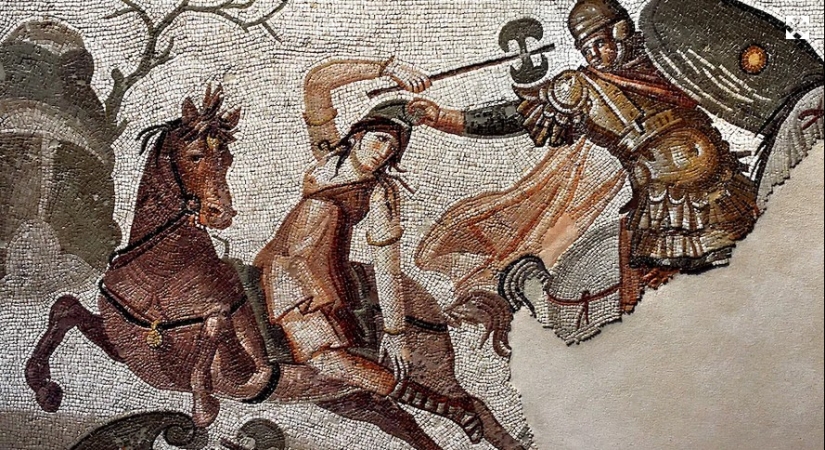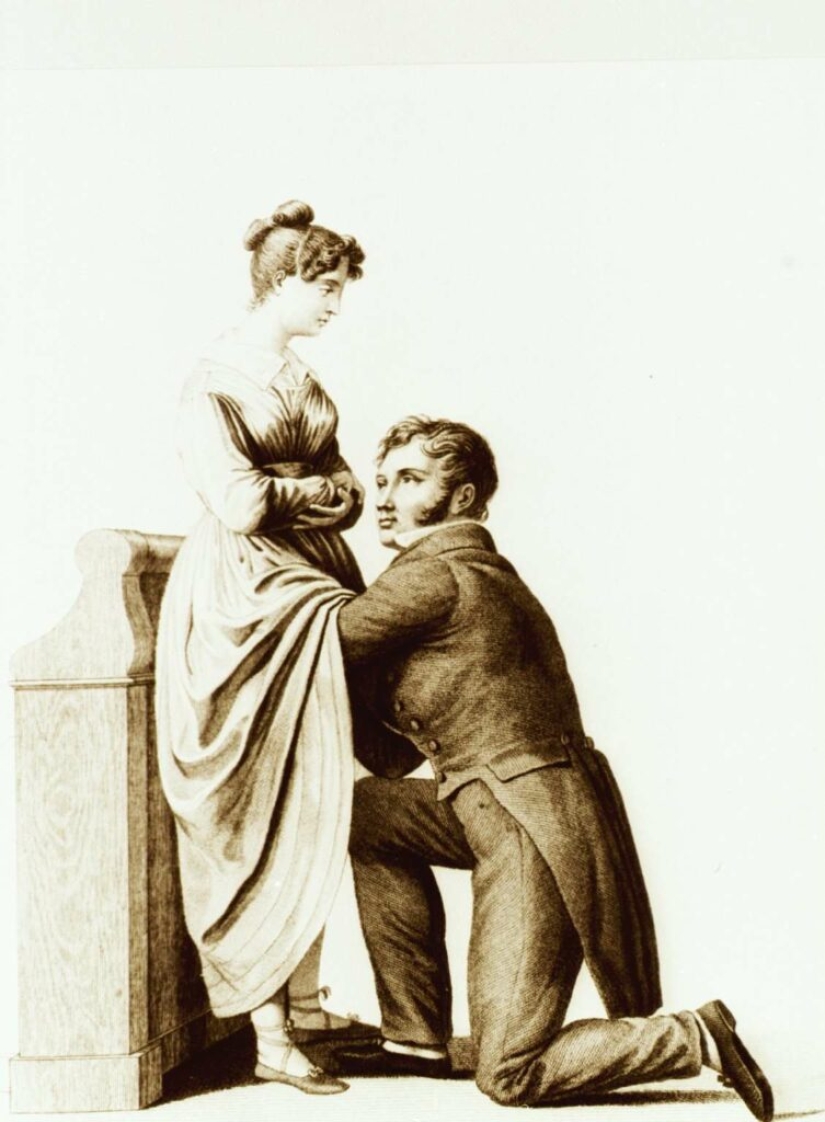How virginity was treated in different eras in different parts of the world
Categories: Health and Medicine
By Pictolic https://pictolic.com/article/how-virginity-was-treated-in-different-eras-in-different-parts-of-the-world.htmlEven in our progressive times, chastity plays a big role in many cultures. Sometimes the loss of a girl's virginity before marriage becomes a real tragedy and even costs her life. You might think that things were even worse in the old days, but they're not. Innocence was treated differently in different cultures. Somewhere they appreciated the strength and dexterity of the bride more, and somewhere they carefully checked the girls with the help of creepy devices and even mystical rituals.

In ancient times, virginity was valued, although its loss did not always mean shame and persecution. Those who did not save themselves for the first husband were considered "spoiled goods". Such women were often married, but their spouses usually became widowers, elders and people with physical disabilities.

The Scythians treated chastity very calmly. To get married successfully, their women had to show their dexterity, military skill and ruthlessness. The ancient Greek historian Herodotus wrote that the girl had to bring the severed head of the enemy to the tribe. Only after that, her candidacy was considered by the grooms.
Brides were selected even more harshly in Libya. Chariot fights for young ladies were held there in ancient times. Herodotus wrote that this happened on a holiday dedicated to the goddess of fertility. The Libyan Amazons were divided into two teams and fought standing on chariots with swords and spears in their hands. Of course, there were wounded and dead, but the survivors and those who did not receive serious injuries passed into the category of enviable brides.
The ancient Egyptians who lived nearby were not interested in the intimate life of brides, nor their fighting qualities. They didn't care much about the girls' past at all. The main thing is that she should be beautiful, docile and with a good dowry. She could have had as many sexual partners as she wanted before marriage, but after marriage she was obliged to remain faithful to her spouse.

In many ancient cultures, innocence was protected by law. For example, on the island of Crete, a large fine was imposed for the rape of a slave who did not know a man. This was spelled out in the code of laws adopted in the 450s BC. But for sexual violence against a non-virgin, the penalty was symbolic, as for petty hooliganism.
In ancient Greece and Rome, women's chastity was taken seriously. If on the wedding night it turned out that the bride was already with a man, the groom could terminate the marriage contract. In this case, the failed spouse and her family were covered with indelible shame.
In some places on In the East, a father could kill his daughter if she did not keep her virginity before the wedding. What can I say, this still remains a problem for many countries of the Islamic world. The custom of presenting a relative and guests with a sheet with blood after the first night dates back to ancient times.

Sometimes, in order not to become a laughing stock, the relatives and friends of the bride and groom arranged an examination before the wedding. Sometimes innocence was determined visually, and sometimes with the help of tools. The Romans invented for this purpose a crude and terrible device speculum (speculum), more like a torture device.
If in ancient times the innocence of a girl was a purely technical indicator, then in The Middle Ages also brought a spiritual base under it. Chastity has become an obvious sign of spiritual ideality, closeness to God. Many instructive Christian parables told about the confrontation between a virgin and an evil spirit. Because of this, the hunt for virgins literally began.

In Europe, innocence was bought, sold, taken away by force, exchanged for various benefits. And all because people were sure that sex with a virgin cures ailments and makes a man younger. Unfortunately, "bad diseases" such as syphilis were also treated by copulation with innocent girls.
In the early Middle Ages, Roman instruments were still used to examine the hymen. But gradually they were abandoned. This was due to the fact that there was always a risk of violating innocence, which was more valuable than gold. The Church approved only "clean" verification methods, excluding direct contact. Special mirrors were widely used for examinations, in which experts looked so as not to see the genitals directly.
In the 13th century book "Women's Secrets" (De Secretis Mulierum), it was generally proposed to determine chastity without examination. Here is what this respected publication writes about the signs of innocence:

But this is not the strangest way. The medieval Gypsies were much more interesting. Representatives of this people were sure that in the depths of the female vagina there is a grape-like gland. At the first intercourse, it bursts and never recovers.
Among the Gypsies, the loss of the gland was equated with the loss of the "gonra— - a woman's honor. After the wedding night, the parents of the bride and groom carefully examined the sheets, hoping to find the juice of the crushed gland - "uva". This custom has been preserved for centuries and was called Gitanos. Obviously, they still found juice on the bed linen.
By the 17th century, gynecologists had ceased to be a kind of medicine man, and their craft began to be considered a medical science. Mirrors were used during inspections, but this method had both supporters and opponents. Some particularly conservative female doctors believed that an examination with instruments "unnecessarily increases sexual appetite" and leads to female hysteria.

Even at the beginning of the 20th century, there were many charlatans and outright blockheads in gynecology. History has preserved the name of gynecologist Robert Latu Dickinson. This physician in 1910 seriously proposed the "rule of two fingers" to determine innocence.
Dickinson claimed that to examine the girl, you can not touch her and you only need to determine by eye the size of the entrance to the vagina. If the doctor thinks that only one or two fingers will fit there— this is a virgin. If three or more - innocence is out of the question.
Strange as it may seem, but in the 19th century the barbaric medieval custom of treating virgins returned. Many brothels in London and Paris offered innocent girls to their clients as a remedy for syphilis and gonorrhea. The service was expensive, but the demand for it was huge.
As terrible as it sounds, but those who had no money or the most thrifty, raped children and teenagers. Historian Roger Davidson wrote that in London at the turn of the 19th and 20th centuries, every fifth sexual abuse of minors was committed for "therapeutic" purposes. Of course, children from poor families suffered most often. There are cases when they were given to the comfort of syphilitics for money by their own parents.

Some judges considered such rape "for medical purposes" not criminal. Therefore, many molesters and rapists used the legend of the healing sexual act as an excuse in court. This often helped to significantly mitigate the sentence and even get off with a fine.
So the ancient customs concerning female innocence, compared with relatively new ones, do not seem so bad.
Recent articles

Leonardo da Vinci was accused of being fond of orgies. William the Conqueror, despite all his successes, was called a "Bastard" ...

Modesty? Decency? A sense of tact? No, you haven't heard! Just look at what the people from the selection below are doing! No ...

American documentary photographer Bruce Davidson came to the UK in 1960 for a couple of months on the assignment of Queen magazine. ...